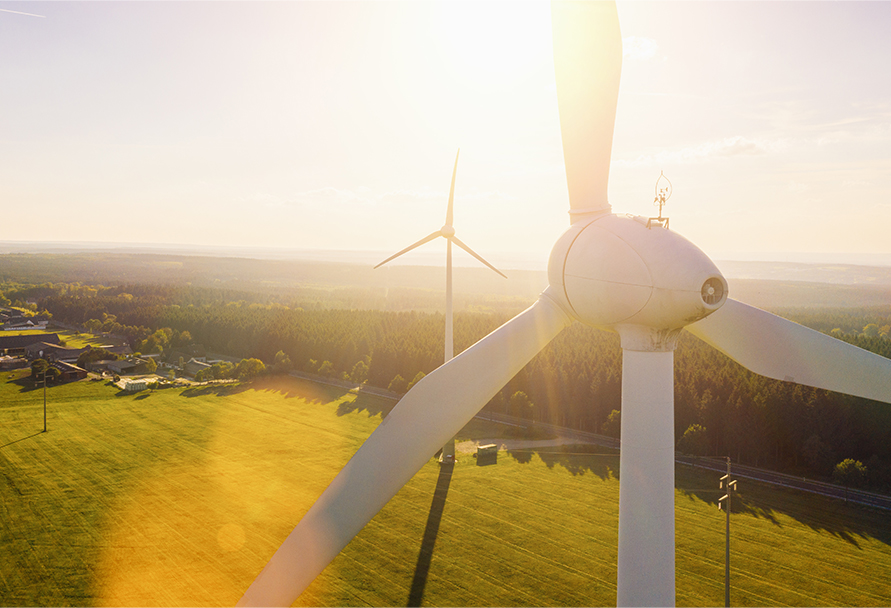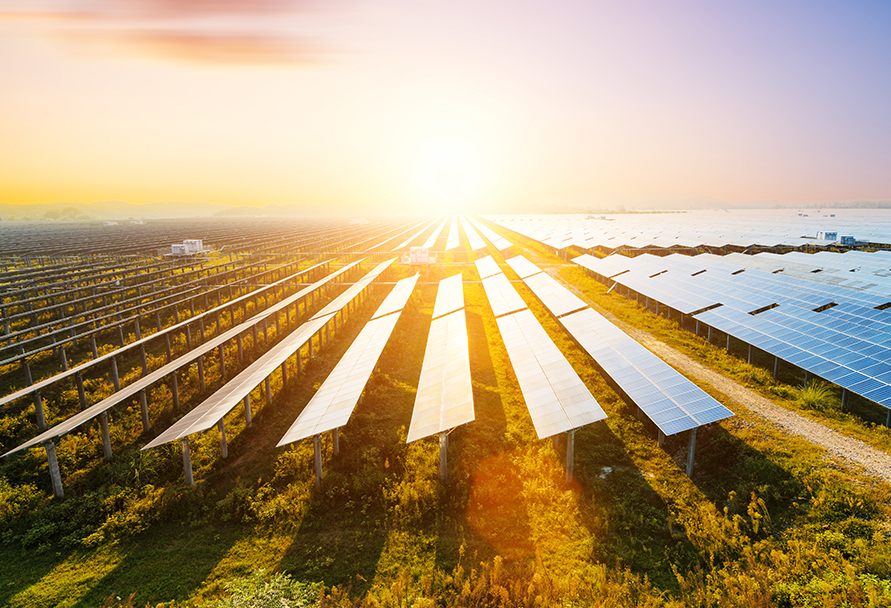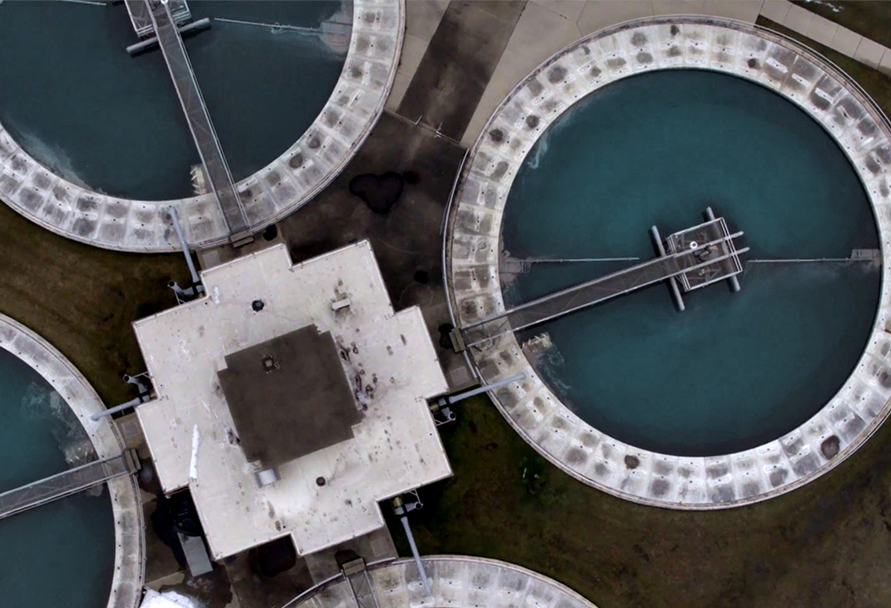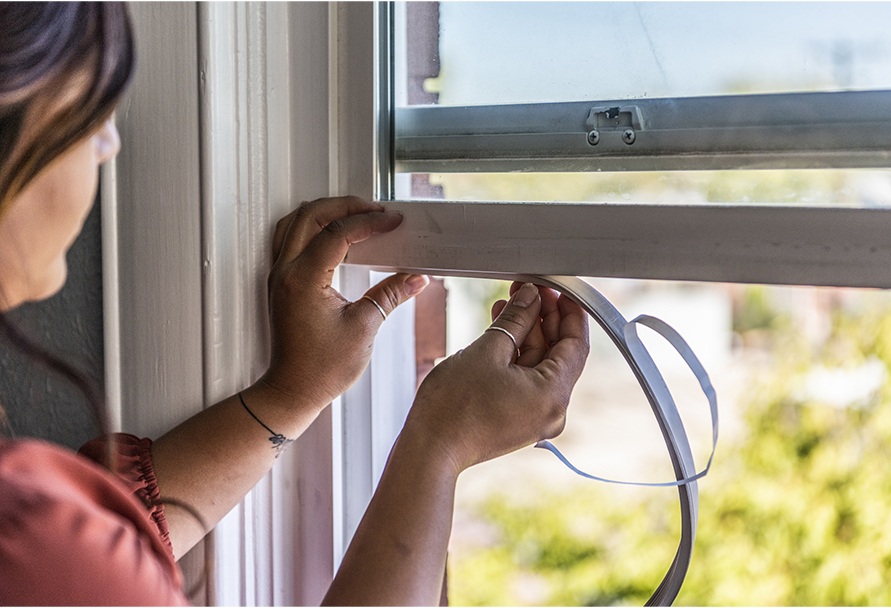Environmental stewardship
We are committed to creating a future that builds upon our responsibility to provide safe, reliable and cost-effective energy that improves our customers’ lives.
We've reduced electric utility emissions 12% since 2023, primarily a result of three new renewable power purchase agreements (PPA); Fall River Solar, our first large-scale solar PPA, and Roundhouse Renewable Energy Wind and South Cheyenne Solar, both serving growing data center loads.
Natural gas emission reduction target

We have committed to achieving net zero emissions for our natural gas distribution system by 2035. We've made significant progress, reducing reported emissions 11% since 2022 and are excited to provide updates and our initiatives and planned strategies to achieve this goal.
Operate a net zero emissions distributions system
In 2022, we set a net zero target by 2035 for our natural gas distribution system, leveraging the company’s focus on safety and system integrity, while advancing current strategies to include expanded damage prevention and advanced leak detection. Our comprehensive strategic timeline outlines the three implementation phases to achieve this target.
Continue best management practices
Pipeline replacement: We’re continuing to replace all remaining unprotected steel pipe with lower emitting materials, including plastic and protected steel. Our Integrity Plans detail the timeline and priority to complete unprotected steel pipeline replacements by 2035.
Expanded leak detection: By collecting detailed emission data from our system, we can identify new opportunities for reductions. In addition to our regular system-wide leak surveying, we conduct additional leak surveys of our aboveground natural gas equipment to help determine fugitive emissions from our system.
We will continue to expand these surveys, both by geographic location and rotational frequency, positioning us to address leaks quickly.
Damage prevention: Our corporate goal to reduce third-party line hits to 1.5 (or below) hits per 1,000 excavations (HPT) will be achieved through the expansion of excavation site visits, predictive analytics with risk modeling to identify high-risk locations, and a continued focus on employee, customer and system safety.
Advanced emission mitigation
Furthering damage prevention: By targeting best in class for third-party damage line hits, we would further reduce system gas releases.
Pursue advanced monitoring and leak detection (AMLD): Systems can detect low concentrations of natural gas leaks and be paired with aerial mapping abilities to pinpoint leak locations. The ability to survey large portions of a system quickly and precisely allows natural gas operators to prioritize repairs based on magnitude, analyze trends across the system, and continue to improve operational safety and reliability.
Achieve net zero emissions
Integrate low carbon fuels: We will continue to advance low carbon fuels such as renewable natural gas (RNG) by expanding RNG blending on our system and obtaining the certifications for the emission displacement.
Utilize carbon offset credits: Quantifiable and certified offsets can be used to displace a balance of emissions from sources such as renewable energy development, landfill methane avoidance and destruction, energy efficiency, and improved forestry management.
Electric emission reduction targets
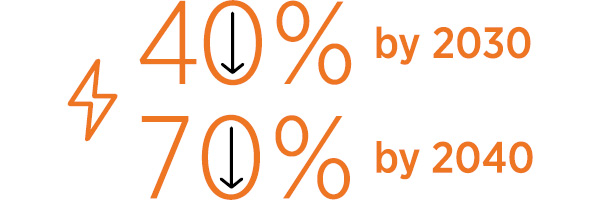
We have continued to achieve progress towards our goal to reduce electric utility emissions intensity 40% by 2030 and 70% by 2040, already reducing emissions by 38% since 2005. We'll continue our strategy of investing in operational improvements, renewable energy and new technologies to further reduce our environmental impact for a responsible energy transition. Our owned and purchased power capacity from renewable energy and storage is expected to account for nearly half our capacity resources by 2030.
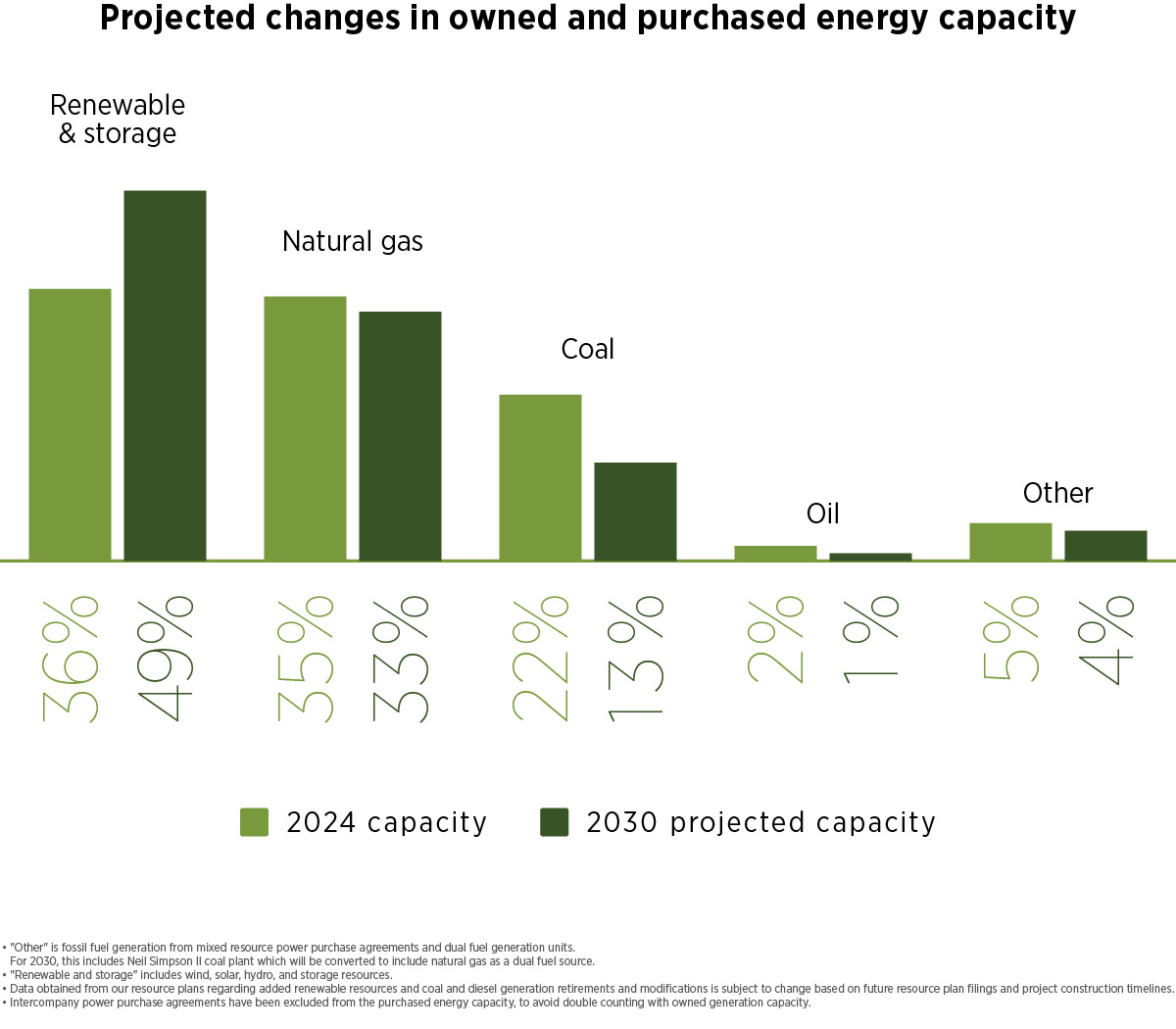
Pathway to our energy future
We're transitioning to our energy future through the addition of low or zero-carbon generation sources and fossil fuel plant retirements or conversions. Our approved resource plan for Colorado includes the potential addition of approximately 300 MW of solar energy and 50 MW of battery storage by 2030. We will be positioned to achieve our greenhouse gas (GHG) reduction goals, without reliance on future technologies, through the conversion of Neil Simpson II coal plant to include natural gas as a dual fuel unit, conversion or retirement of our remaining coal and diesel power plants and the addition of renewable energy resources and storage.
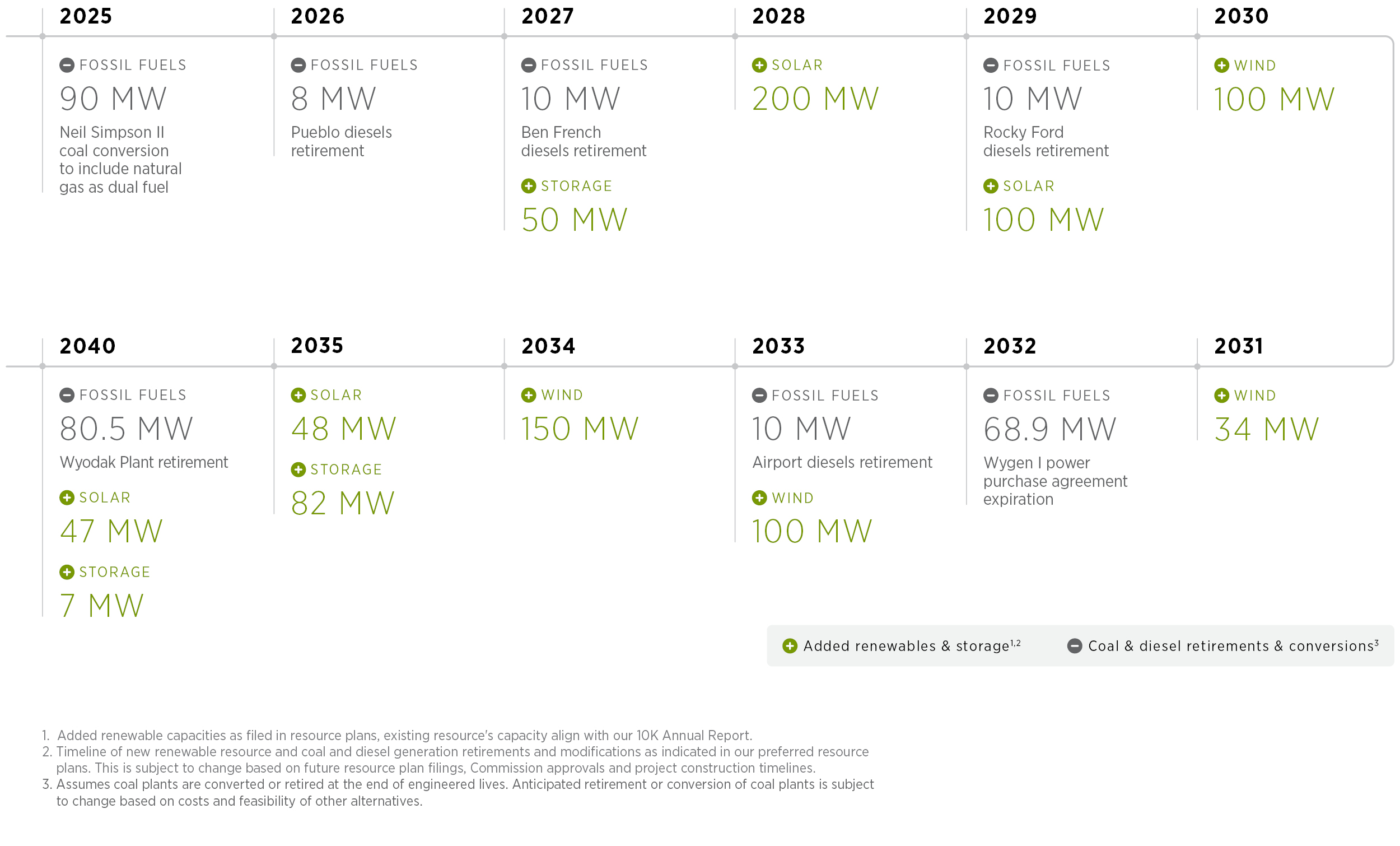
Electric utility renewable energy
A key strategy to achieving our greenhouse gas (GHG) reduction goals is to own, operate and purchase renewable energy. Over the past decade we have added more than 202 MW of owned and operated wind generation capacity across our service territory. In addition to company owned and operated renewable energy sources, we leverage PPAs to meet customer needs and help achieve our GHG reduction goals. Our first large-scale solar PPA, Fall River Solar, was brought online in 2023. The energy from this 80 MW project located near Oelrichs, South Dakota, is used to serve Black Hills Energy customers throughout western South Dakota and eastern Wyoming. Roundhouse Renewable Energy Wind and South Cheyenne Solar, brought online in 2023 and 2024, respectively, are serving growing data center loads. Our total renewable portfolio of owned and contracted renewable energy represents 36% of our generation capacity and helps to achieve our GHG reduction goals and serve our customers’ needs.
Black Hills Energy owned renewable portfolio
29 MW: Busch Ranch I
Busch Ranch I provided an opportunity to develop a sixth renewable energy zone in Colorado as part of SB-100. This renewable energy zone enabled further opportunities to develop Bush Ranch II and Peak View, wind projects. This project supports Colorado's goals to reduce greenhouse gas emissions associated with retail electric sales 80% by 2030 as compared to 2005.
59.4 MW: Busch Ranch II
Completed in 2019, this wind facility powers 28,000 homes and is a milestone in achieving 30% renewable energy for our Colorado customers.
60.8 MW: Peak View
Located in southern Colorado, Peak View serves more than 94,000 customers. This facility was named after the view of the Spanish Peaks.
52.5 MW: Corriedale
Our newest renewable facility located on King Ranch near Cheyenne, Wyoming, is owned by our South Dakota and Wyoming electric utilities, and has the highest energy produced per MW of capacity to date for our wind facilities. This facility is named after the “Corriedale” sheep, a tribute to King Ranch’s role in the development of the Wyoming sheep industry. Corriedale was strategically located in southeast Wyoming to capitalize on one of the highest wind energy density concentrations in the country.
Black Hills Energy renewable power purchase agreements
- 60 MW: Platte River Power Authority Spring Canyon Wind
- 30 MW: Duke Energy Silver Sage Wind
- 12 MW: Platte River Power Authority Silver Sage Wind
- 30 MW: Duke Energy Happy Jack Wind
- 4 MW: City of Spearfish Hydro
- 80 MW: Fall River Solar
- 106 MW: Roundhouse Renewable Energy Wind*
- 150 MW: South Cheyenne Solar*
*Renewable energy and associated environmental attributes for these projects are for the benefit of and consumed by Cheyenne Light Fuel and Power customers.
